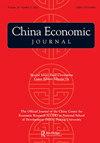China’s changing economic relations with the world: introduction
IF 2.3
Q1 ECONOMICS
引用次数: 0
Abstract
How will the unexpected Russia–Ukraine conflict started in late February 2022 redefine China’s economic relations with the rest of the world? This is the central question of the current special issue. Although China is not directly involved, the conflict could change the way the world economy operates. China’s economic relations with the rest of the world, especially with the United States and its allies, started to change years earlier. But the Russia–Ukraine conflict could accelerate such change. When China decided to start economic reform at the end of 1978, it was virtually an autarkic economy. Exports, which accounted for less than 5% of GDP, were mainly resource and agricultural products, and were organized by twelve state-owned export corporations in order to exchange for imports of machinery and equipment products. Inward or outward international investment was literally non-existent. During the following decades, China quickl emerged as one of the most successful economic stories worldwide. Between 1978 and 2008, China’s real GDP growth averaged 9.8%. Its GDP per capita rose from less than US$200 to above US$3,000 during the same period. In 2010, China surpassed Japan to become the world second largest economy. In retrospect, the external sector was a key driver of economic development during that time. In the late 1980s, the Chinese government formulated ‘the great external economic circulation strategy’, leveraging the external capital, inputs, technology and market. And in 2001, China joined the World Trade Organization. As a result, exports rose to 35% of GDP in 2006 and, in the 1990s and the 2000s, China was regularly the largest recipient country of foreign direct investment. Apparently, the reform and open-door policies were the most important factors contributing to China’s economic success during the past decades. The reform policy not only re-introduced incentives for workers and entrepreneurs to work hard but also adopted the market mechanism to allocate resources. And the open-door policy enabled China to participate in the international division of labor as well as taking advantages of international capital and technology. The favorable external environment also played irreplaceable roles in China’s economic development and opening up. These came in two dimensions: one was starting of economic globalization from 1971 and the other was warming of Sino-US relations中国与世界不断变化的经济关系简介
2022年2月下旬爆发的俄乌冲突将如何重新定义中国与世界其他地区的经济关系?这是本期特刊的核心问题。尽管中国没有直接参与,但这场冲突可能会改变世界经济的运作方式。中国与世界其他地区的经济关系,特别是与美国及其盟友的经济关系早在几年前就开始发生变化。但俄乌冲突可能会加速这种变化。1978年底,当中国决定开始经济改革时,它实际上是一个自给自足的经济体。出口占国内生产总值不到5%,主要是资源和农产品,由12家国有出口公司组织,以换取机械和设备产品的进口。实际上不存在对内或对外的国际投资。在接下来的几十年里,中国迅速成为世界上最成功的经济故事之一。1978年至2008年,中国实际国内生产总值平均增长9.8%,同期人均国内生产总值从不足200美元上升到3000美元以上。2010年,中国超过日本,成为世界第二大经济体。回顾过去,外部部门是当时经济发展的关键驱动力。20世纪80年代末,中国政府制定了“大外部经济循环战略”,利用外部资本、投入、技术和市场。2001年,中国加入了世界贸易组织。因此,2006年出口占国内生产总值的比例上升到35%,在20世纪90年代和21世纪初,中国经常是外国直接投资的最大接受国。显然,改革开放政策是中国过去几十年经济成功的最重要因素。改革政策不仅重新引入了激励工人和企业家努力工作的机制,而且采用了市场机制来分配资源。中国的对外开放政策使中国能够参与国际分工,并利用国际资本和技术优势。有利的外部环境对中国经济发展和对外开放也发挥了不可替代的作用。这主要体现在两个方面:一是1971年经济全球化的开始,二是中美关系的升温
本文章由计算机程序翻译,如有差异,请以英文原文为准。
求助全文
约1分钟内获得全文
求助全文

 求助内容:
求助内容: 应助结果提醒方式:
应助结果提醒方式:


